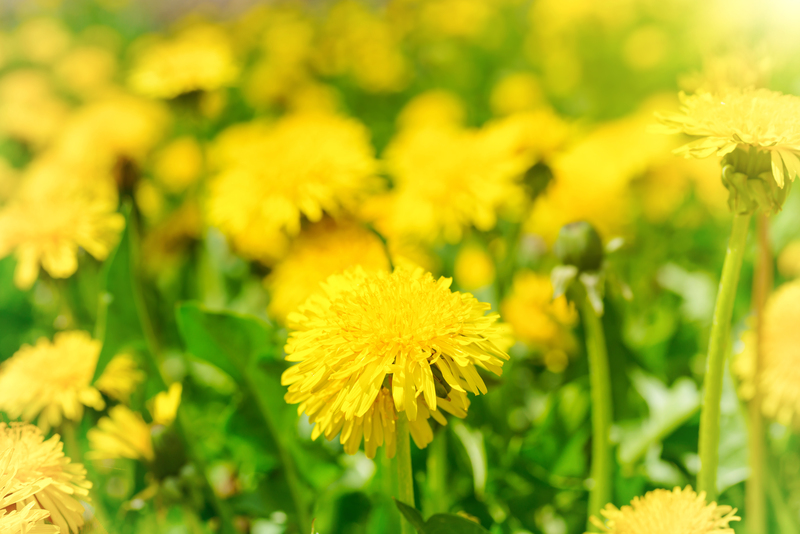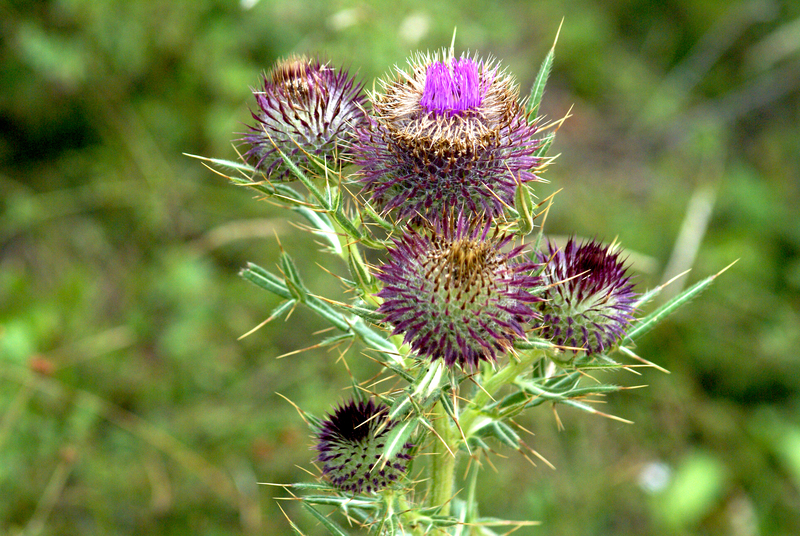The Intricacies of Container Gardening Explained
Posted on 19/08/2025
The Intricacies of Container Gardening Explained
Container gardening has captivated both novice and experienced horticulturists around the world. Why? Because this age-old method of cultivating plants in containers offers unparalleled flexibility, aesthetic value, and practicality. In this detailed article, we'll explore the intricacies of container gardening, unraveling its many nuances, benefits, and pro tips to help you master this art--no matter the scale of your space.

What is Container Gardening?
Container gardening refers to the practice of growing plants in pots, tubs, boxes, or other vessels, instead of directly in the ground. Historically, these methods date back centuries to ancient civilizations, but modern container gardening has evolved, allowing gardeners to optimize even the smallest spaces--balconies, patios, window sills, or rooftop terraces.
Why Choose Container Gardening?
- Flexible placement: Rearrange your garden according to seasons or personal preference.
- Space-efficient: Perfect for urban dwellers or those with limited land access.
- Enhanced pest and disease management: Isolate plants to prevent them from spreading issues.
- Customizable soil: Provide the perfect growing conditions for each plant.
- Aesthetic potential: Use containers to add color, texture, and interest to any setting.
Understanding the Art of Choosing Containers
At the heart of successful container gardening is the vital decision of selecting the right containers. The vessel you choose directly impacts plant health, growth rate, and overall garden aesthetics.
Materials Matter: Pros and Cons
Let's break down the common container materials:
- Terra Cotta: Offers breathability and classic charm, but can dry out quickly and break easily.
- Plastic: Lightweight, retains moisture well, and comes in myriad colors and shapes. May degrade with prolonged sun exposure.
- Wood: Natural look and good insulation for roots, but needs treatment against rot.
- Metal: Durable, stylish, but may overheat roots in sunlight.
- Ceramic and Glazed Pots: Visually stunning and retain moisture, but can be heavy and are prone to cracking.
Drainage: The Golden Rule
Drainage holes are absolutely essential in any container. Without proper drainage, water accumulates, causing roots to rot and fostering fungal infections--a common issue in small space gardening.
The Best Soil Mix for Container Gardens
Soil selection is often underestimated in container garden setups. Unlike in-ground gardens, plants in pots are fully reliant on the soil mixture you provide.
Characteristics of Quality Potting Mix
Optimal potting media for containers should:
- Be lightweight and airy, allowing root growth and oxygenation.
- Retain moisture but drain quickly to avoid waterlogging.
- Contain organic material for nutrients.
- Be free of pests, weeds, and diseases.
Many gardeners recommend mixing commercial potting soil with components like perlite, vermiculite, compost, peat moss, or coir for the ultimate medium.
Nurturing Your Soil: Amendments and Refreshing
Over time, the soil in containers can become depleted of nutrients or compacted. Regularly refresh your mix with compost or well-balanced organic fertilizer, and consider replacing the soil every 1-2 years for thriving container plants.
Plant Selection: Matching Plants to Containers
Choosing the right plants is pivotal in successful container gardening. Certain varieties naturally excel in confined spaces, making them ideal candidates for potted arrangements.
Vegetables and Herbs
- Leafy greens--such as lettuce, spinach, and kale--thrive in shallow containers.
- Compact tomato, pepper, and cucumber varieties--look for "bush" or "dwarf" cultivars.
- Herbs--basil, thyme, parsley, mint, and chives all perform exceptionally well in pots.
Flowers and Ornamentals
- Pansies, petunias, and marigolds bring vibrant color to smaller containers.
- Bulbs--like tulips and daffodils--can be staged for seasonal displays.
- Trailing vines like sweet potato vine and ivy create dramatic, cascading effects.
Edible Container Gardens
- Strawberries and lettuce are perfect for hanging baskets.
- Dwarf fruit trees or patio citrus can thrive in larger tubs for years of harvest.
Key Aspects of Plant Arrangement
The artful arrangement of plants is a defining feature of creative container gardening. To maximize beauty and productivity, follow the thriller, filler, spiller method:
- Thriller: The primary, attention-grabbing plant (tall grass, upright flower, or centerpiece).
- Filler: Medium-height plants that fill out around the thriller.
- Spiller: Trailing plants that drape over the side and "soften" the container's edges.
Watering Techniques for Container Gardens
Perhaps the most crucial maintenance task in container gardening is watering. Because containers lose moisture faster than ground plantings, precise irrigation is vital.
How Often to Water
There is no one-size-fits-all answer. Factors like season, container size, material, and plant type all determine frequency. Here are essential tips:
- Check soil moisture daily in hot months by inserting your finger to the first knuckle. If it feels dry, water thoroughly.
- Use mulch--like straw or bark chips--on top of the soil to slow evaporation.
- Self-watering containers can be helpful for busy gardeners.
Feeding Your Container Plants
Rapidly growing plants in confined spaces quickly use up available nutrients, making fertilization vital. Apply a balanced liquid fertilizer every 1-2 weeks, or use slow-release granules at planting time.
Organic vs Synthetic Fertilizers
- Organic: Sustainable, improves soil health, but may take longer to act.
- Synthetic: Fast-acting, but overuse can cause salt buildup and harm microbes.
Sunlight and Positioning
Plants in containers benefit from easy relocation to optimize sunlight. Most vegetables require at least 6 hours of direct sun daily, while shade-loving varieties can thrive in low-light spots.
- Rotate containers to promote even growth.
- If growing indoors, supplement with grow lights in winter or for sun-hungry species.
Seasonal Considerations in Container Gardening
One of the greatest joys of the container garden is year-round flexibility. With careful planning, you can have continual blooms or edibles, even when outdoor conditions are harsh.
Winter-Proofing Containers
- Use frost-resistant pots for perennials.
- Group containers together and insulate with straw or bubble wrap for added warmth.
- Move sensitive plants indoors during freezing temperatures.
Pest and Disease Management in Container Gardens
While container gardening reduces risk, it doesn't eliminate common pest problems. However, managing issues is easier due to containment.
- Inspect plants regularly for insects or wilted leaves.
- Remove debris and dead foliage to reduce habitat for disease and pests.
- Use organic pest control methods, such as neem oil sprays or introducing beneficial insects.
Creative Ideas for Container Gardening
Let your imagination bloom. Beyond classic pots, use upcycled items--old buckets, boots, teapots, or crates--for a unique container garden design that reflects your personality.
- Vertical gardening: Utilize wall-mounted pots or plant towers for space efficiency.
- Theme gardens: Group plants by color, scent, or culinary use (like a pizza garden with tomatoes, basil, and oregano).
- Mobile gardens: Equip containers with wheels for easy movement.
Common Mistakes in Container Gardening (and How to Avoid Them)
- Overcrowding plants--results in competition for resources. Always check spacing guidelines.
- Using garden soil instead of potting mix--it becomes dense, leading to poor drainage.
- Skipping drainage holes--always ensure proper outflow to prevent rot.
- Neglecting fertilizer--hunger is a major cause of poor growth in potted plants.
- Under or overwatering--find a balance tailored to each plant's needs.

Reaping the Rewards: The Benefits of Mastering Container Gardening
The intricacies of container gardening yield more than just attractive planters--they open doors to healthier lifestyles, sustainable food sources, and personal satisfaction.
- Mental well-being: Gardening has been shown to reduce stress and boost happiness.
- Fresh produce: Grow organic, pesticide-free vegetables right at home.
- Biodiversity: Attract pollinators and expand your ecosystem in even the smallest spaces.
- Learning and family bonding: Container gardens are fantastic learning tools for children and adults alike.
In Summary
The art and science of container gardening may seem complex at first glance, yet with guidance and experimentation, anyone can become adept. From perfecting soil mixes and matching plants to designing vibrant arrangements and tackling pests, every element adds to the fulfillment of growing a flourishing container garden.
Ready to embark on your own container garden journey? Whether you have a sunny windowsill or an expansive rooftop, mastering these intricacies will empower you to cultivate beauty, flavor, and joy in any space.
Frequently Asked Questions about Container Gardening
- Can I use recycled containers?
Absolutely--just ensure they have proper drainage and are food-safe if used for edibles. - How do I prevent root binding?
Regularly repot rapidly growing plants and select appropriately sized containers. - How often should I fertilize my container plants?
Generally every 2-4 weeks with a balanced fertilizer, depending on plant needs and soil renewal. - What's the easiest plant to start with?
Herbs like basil or mint, and leafy greens such as lettuce or spinach are both beginner-friendly and quick to grow.
Discover the endless possibilities with container gardening, and turn any space into a thriving oasis!

